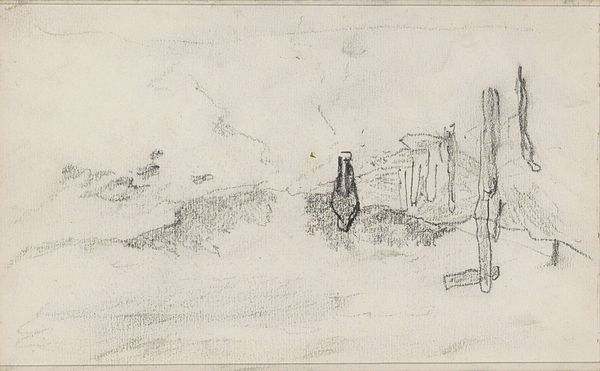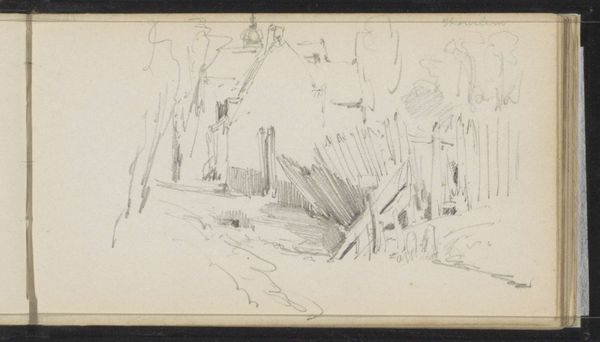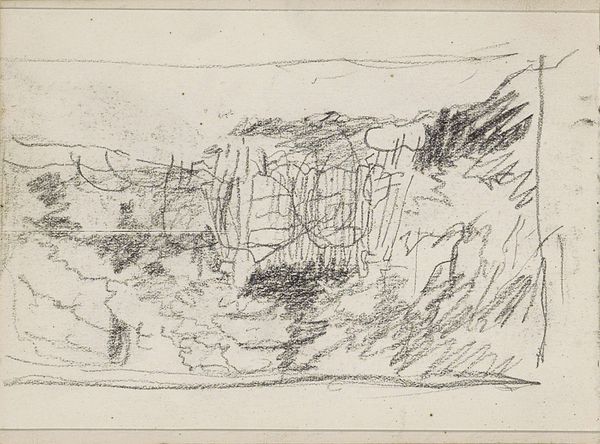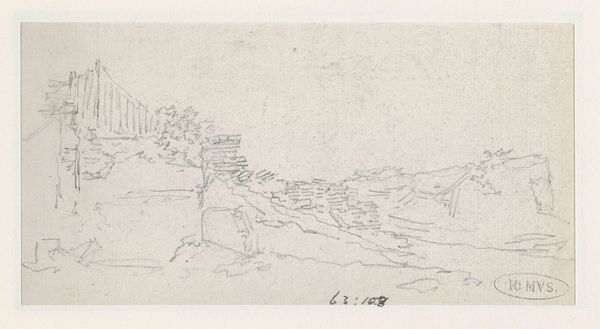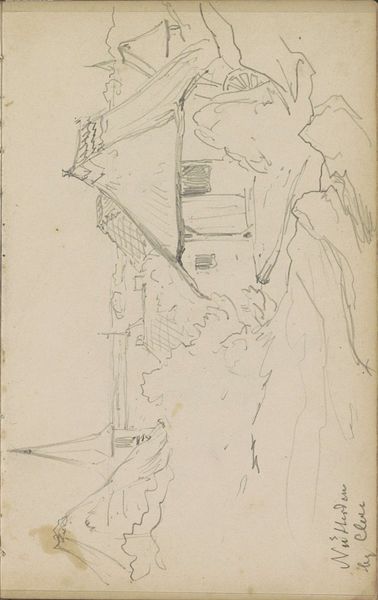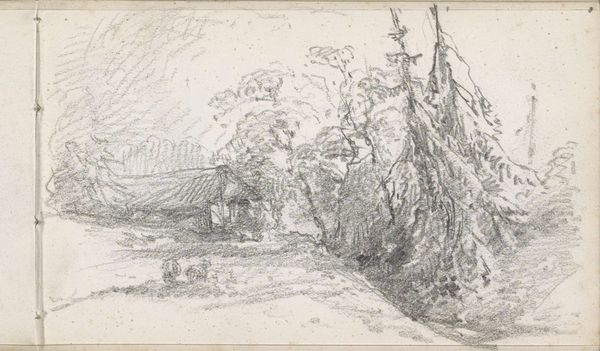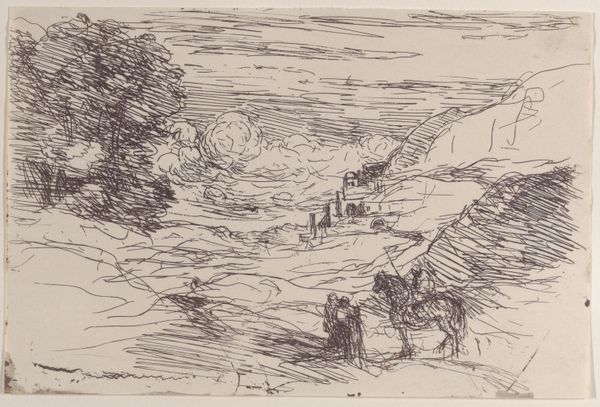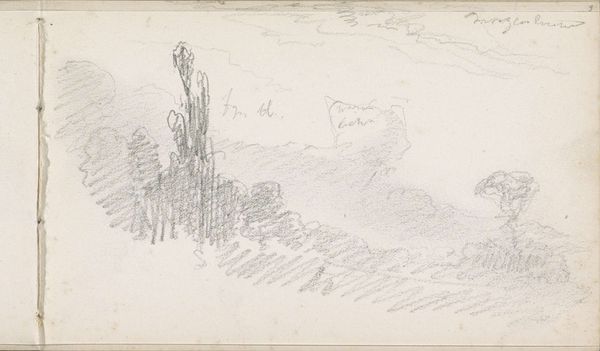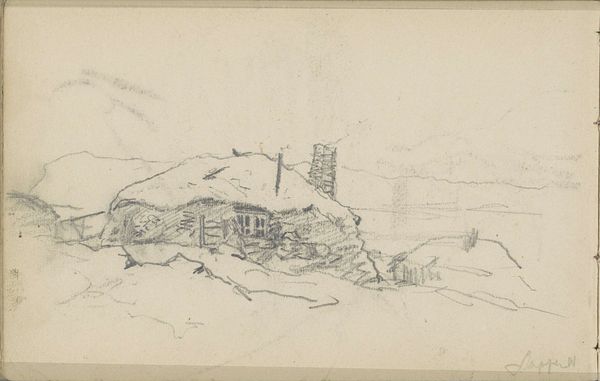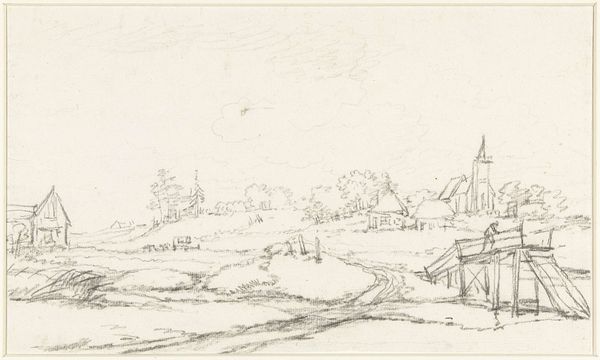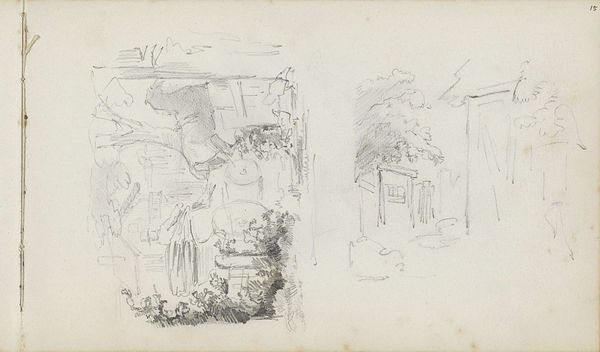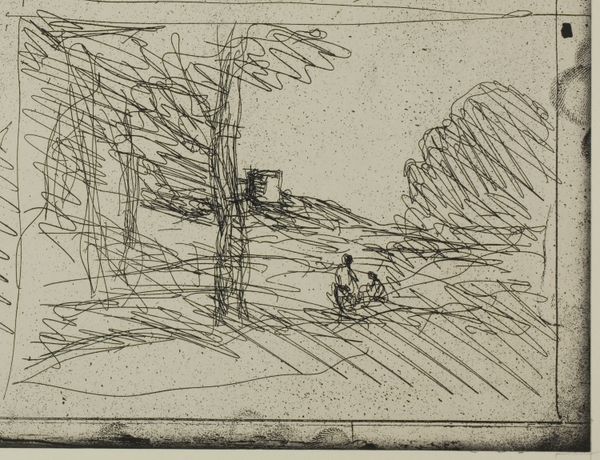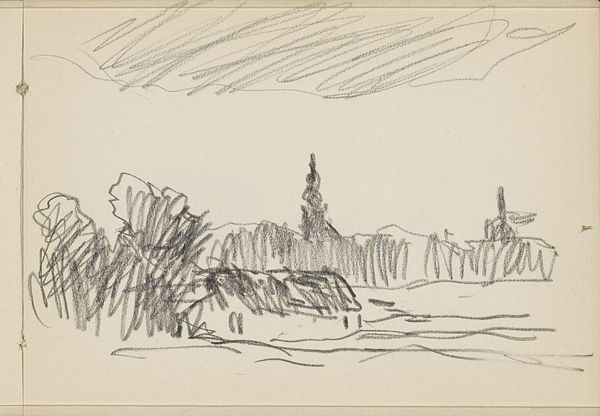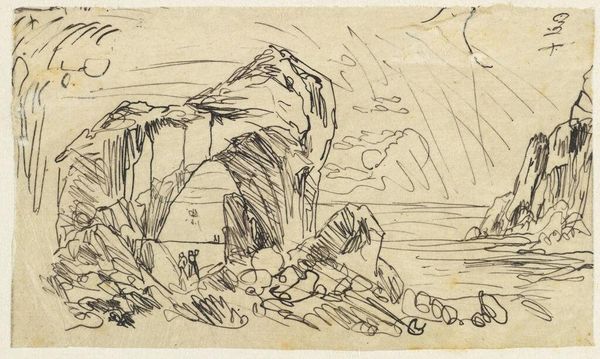
drawing, ink, pencil
#
tree
#
drawing
#
landscape
#
form
#
ink
#
pencil
#
line
#
realism
Copyright: Rijks Museum: Open Domain
Editor: Anton Mauve's "Fence Between the Trees," created between 1848 and 1888, is a pencil and ink drawing currently held at the Rijksmuseum. It feels unfinished, almost like a fleeting thought captured on paper. What do you see in this piece, especially regarding how he uses line and form? Curator: The immediate sense I get is one of enclosure, and that directs my thoughts to our human impulse to mark and define territory. Look how the fence, though simple in its rendering, creates a very definite foreground. What kind of boundary do you think the artist is attempting to create here? Editor: I guess it could be interpreted literally as a property line, but given its rustic, almost broken appearance, I wonder if it’s also a symbolic barrier – perhaps between nature and civilization, or even safety and the unknown? Curator: Precisely! Fences often function as dualistic symbols, and Mauve, working during a time of great industrial change, might be commenting on humanity’s relationship to the natural world. Note how the dense trees almost overwhelm the frail structure, as if nature is subtly reclaiming the space. Think about how cultural memory would affect our viewing; the symbol is altered by how societies remember it. How does that change your understanding? Editor: I see the fence as vulnerable, perhaps reminding us of the impermanence of human attempts to control nature. I also realize how easily we impose meaning onto such a simple image. Curator: Exactly. And by extension, all visual symbols we engage with. Mauve's drawing allows us to see how the emotional and psychological weight of these images constantly shift, reflecting the cultural landscape we inhabit. Editor: I never thought about a simple fence having such a rich history of symbolism. This has opened up a completely new perspective for me.
Comments
No comments
Be the first to comment and join the conversation on the ultimate creative platform.
